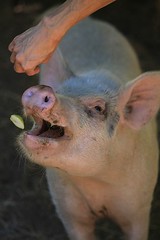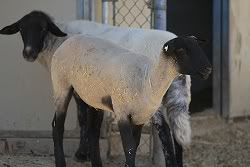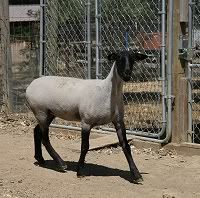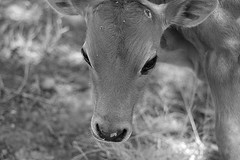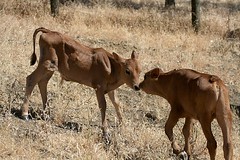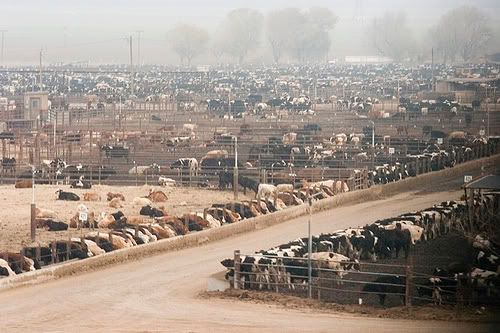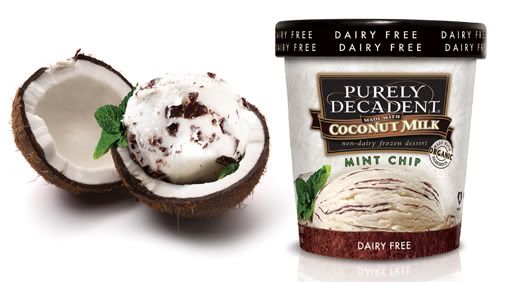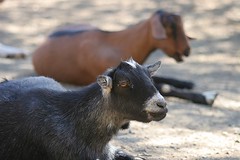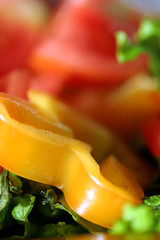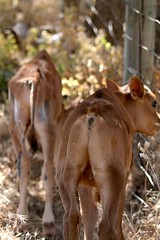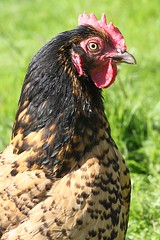Most of us agree transitioning away from animal research is good.
I admit I struggle when it comes to behavioral research studying emotions and learning abilities. People still think farmed animals are stupid, incapable of feeling joy or anger. Yet study after study is showing otherwise, forcing a shift in thinking (and hopefully behavior change).
For example, the much maligned fishes of the world received a boost in reputation when scientists found they experience pain, can remember locations and behaviors for years, and exhibit similar learning patterns as humans. Nothing legislatively has come from these studies*, but no longer can people logically claim that fish are stupid, emotionless, incapable of feeling pain or that they have a 3-second memory. Pescetarians have to question the ethics of consuming sentient, feeling beings who are killed in manners that even slaughterhouses avoid (not to mention the environmental ethics of consuming fish).
Behavioral research is showing us more than we ever knew about animals, like fish. Perhaps that is a slippery slope - I mean, what I feel is useful knowledge may not be what you feel is useful and whether any of us feels it is useful may mean nothing to the animals (even if they are not killed or hurt physically).
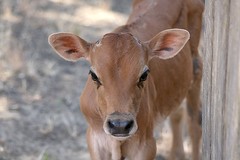
Still, I do peruse the abstracts of
Applied Animal Behavior Science. Most of the studies leave me shaking my head, some make me smile**, others make me cringe. And some beg the question, "Didn't you know this already?" This is one: "Influence of artificial vs. mother-bonded rearing on sucking behaviour, health and weight gain in calves" which goes about determining whether calves given access to their mother's milk gained more weight, had fewer disease or exhibited less abnormal behavior, like cross-suckling (trying to nurse off other objects or pen mates).
The results? Calves who nursed off their own mother gained more weight and exhibited less abnormal suckling behavior.
Which
seems great, on the surface. I mean one could argue that this suggests calves should be with their mothers to avoid abnormal behaviors and promote growth. Dairies separate the calf from the mother the day of birth.
The authors don't suggest this, but to me, the real result is that Mother Nature had it right from the beginning - calves are biologically and behaviorally geared to drinking
their own mother's milk. The basic premise of this study is tragic; it's based on a system of rearing that denies the most instinctive, basic bond in most mammals, that between dam and child (or cow and calf, in this case). Everything about dairy farming is abnormal, from the hyped-up milk production to the growth hormones to the separation of cow from calf to this inculturated notion that we
human beings should be consuming the breast milk of
bovine beings. This just seems like common sense stuff, yet most of us, in the United States at least, grew up thinking that drinking the milk of another species was just hunky-dory. I certainly did.
I can't help but think of the calves in this study. Some enjoyed 30 measly minutes a day with their mother. How glorious those few precious moments must have been, the suckling and warmth and comfort only a mother can provide. The grooming, talking, sniffing and all that comes with communication with a being who
gets you. To spend hours upon hours eagerly waiting for those few precious moments. And then there are the calves who didn't get to nurse, who seek with a painful desperation the comfort of a mother by sucking, sucking, sucking on anything in sight. Who know they are missing something but do not quite know what it is, or maybe they do - it's painful either way. Both sets of calves are deprived in one manner or another, both never enter fully into Being A Bovine.
Summer and Freedom, the two newest Animal Place residents, know what it is like to be deprived. They too are like the calves in the study who never had a mom to nurse. They try to nurse ears, hair, people's fingers, pant legs, shoe laces....anything and everything is a potential source of milk, really a source of comfort and contact. We do our best to comfort and help them grow. But none of it compares to their mother, she who knows best, who smells like home and milk and good things. We cannot wait until both are big enough to go out with the other cattle. That is where they will shine, where they will enter a small community of their own. I wish they had known their moms, that they were here to give what is most needed. I wish that for all young.
I can't end this post without asking you to consider dairy milk alternatives - soy, nut, rice, almond, oat. There are vegan cheeses commercially available as well.
*Fish are not protected by any slaughter laws, meaning they experience enormous pain and stress during decompression, suffocation, clubbing and other sordid methods of slaughter. It is unconscionable that they do not.**One study strapped a tri-axial accelerometer to grazing goats just to see what grazing goats do in their spare time (they graze, apparently).
 Yeah, I ate that. I hope it inspires your vegan culinary skills, of which you need few to enjoy this sandwich.
Yeah, I ate that. I hope it inspires your vegan culinary skills, of which you need few to enjoy this sandwich.


